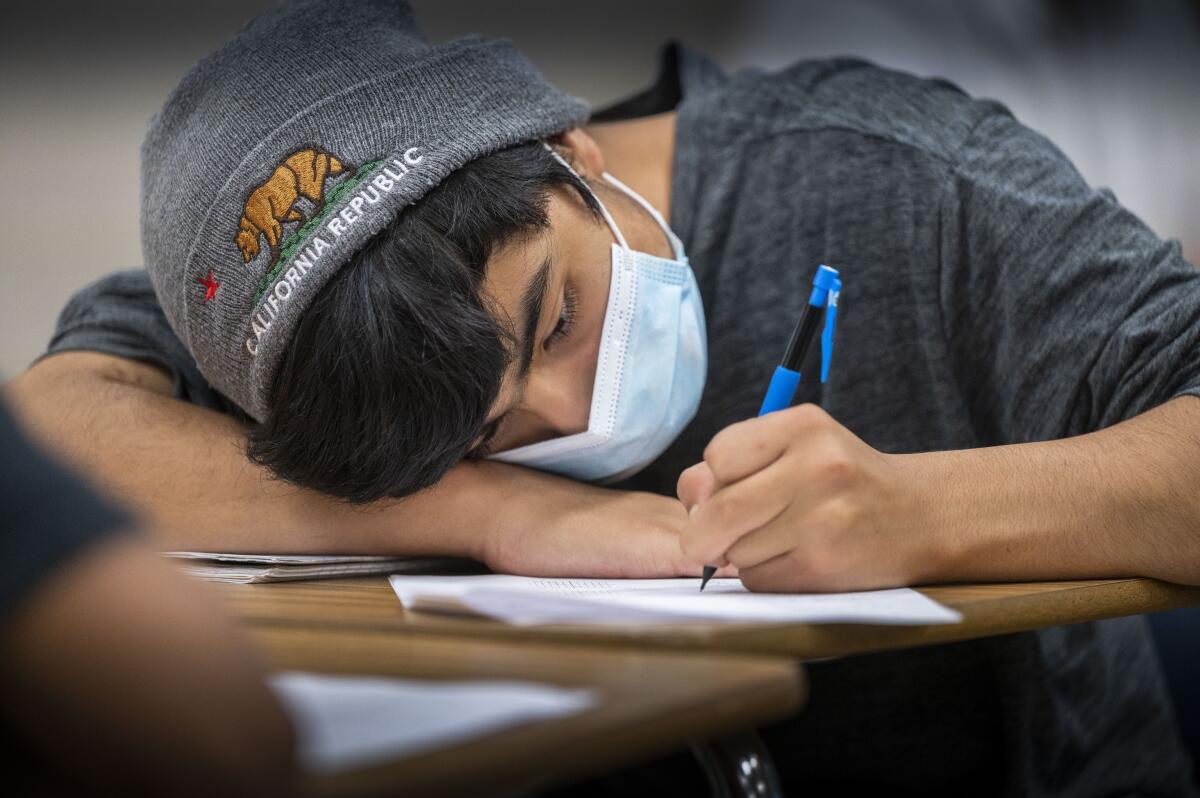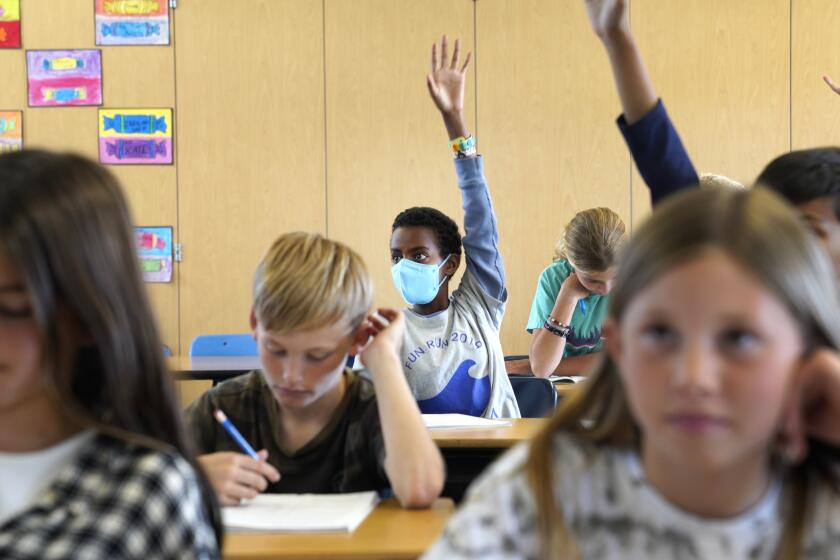School’s out. Will that help California get ahead of COVID-19?

Coronavirus cases across Los Angeles County are rising just as students are counting down the days left in school.
As L.A. prepares for its third pandemic summer, a question hovers like June gloom: What will the summer holiday mean for COVID-19?
“It’s very hard to accurately predict,” said L.A. County Public Health Director Barbara Ferrer. “I’m less and less comfortable with the modeling and the predictions, and more and more comfortable with just noting that we have a lot of uncertainty.”
She’s not alone.
“I’m a little cautious making predictions about the summer and COVID,” USC virologist Paula Cannon said. “If nothing else, I’ve learned this virus throws us curve balls all the time.”
The county’s official case count will likely drop dramatically after L.A. Unified finishes its school year on Friday. That doesn’t have anything to do with coronavirus transmission, however. The district’s required weekly testing for all students and staff accounts for roughly half of test results reported to the county, Ferrer said.
Without those hundreds of thousands of weekly tests, she said, the county will rely more heavily on data from wastewater treatment sites and cases reported in high-risk settings such as nursing homes, hospitals and homeless shelters.
Epidemiologists are adamant that it’s too early to say whether COVID-19 has settled into predictable seasonal patterns like those associated with the flu or West Nile virus.
Officials are deciding how best to respond now that COVID-19 cases are rapidly rising after plunging in the spring.
The past two summers have been something of a double-edged sword for coronavirus transmission.
School breaks and sunny weather mean less time in crowded classrooms and more time outdoors, both of which slow the virus’ spread.
But it’s also a time of year when many people let down their guard, drop their masks and gather for parties, weddings, graduations and festivals. And with another hot, dry summer expected, many people in the county will seek air-conditioned refuge indoors, sometimes in crowded cooling centers.
Both L.A. County and the U.S. as a whole saw a small increase in cases the last two summers, in July 2020 and August 2021.
This year’s summertime wave may have arrived early. Cases are rising locally and nationwide, fueled by waning immunity and highly transmissible new Omicron subvariants.
“Will we have a wave this summer? Yes, we’re already soaking in it,” said Andrew Noymer, an epidemiologist and infectious-disease demographer at UC Irvine.
The average number of daily new cases reported over the last seven days in L.A. County was 4,442 at the end of May, a 75% increase from the previous month. The positivity rate for coronavirus tests rose in the same period of time, from 2.1% on May 9 to 3.6% on June 6.
Reports from K-12 schools mirrored this pattern. Local schools reported 7,854 coronavirus cases among students and staff during the week ending May 29, up from 4,479 in the week ending May 1. With 762 new COVID-19 cases per 100,000 people, children ages 12 to 17 currently have the highest case rate of any demographic in the county.
Another bummer coronavirus summer for California? With cases on the rise, the state finds itself in a familiar, if frustrating, position.
The most common variant in L.A. County is BA.2.12.1, a version of Omicron with a gnarly Delta twist. An aggravating combination of both variants, it spreads faster than the original Omicron and has a genetic mutation on its spike protein that helps it skirt past existing immunity from a prior Omicron infection.
“What’s circulating right now spreads way more than anything we’ve ever seen,” Ferrer said. “This virus mutates like crazy and is able to effectively mutate to its advantage.”
Vaccines and boosters continue to be the most effective tools for slowing the virus’ spread, and for preventing serious illness and death. The U.S. Centers for Disease Control and Prevention now recommend booster shots for all vaccinated people ages 5 and older if it’s been at least five months since they were fully vaccinated. For immunocompromised people ages 12 and older and for all people 50 and older, the CDC recommends a second booster if four months have passed since their first booster.
Ferrer strongly encouraged people to wear a mask when spending time in crowded indoor situations, such as while shopping or seeing a movie. The county hasn’t reinstated an indoor mask mandate and remains well below the threshold that would trigger one.
“I wouldn’t say that anybody needs to have excessive worry right now, because we’ve got amazing tools that we can use that are going to keep most people relatively safe,” she said.
Ferrer also advised people to take a coronavirus test before traveling by plane or attending an indoor event.
“These to me are sensible steps we can take that don’t really limit our ability to really do the things we love and be with the people we care about, but do acknowledge we’ve got a responsibility to be taking care of each other,” she said.









